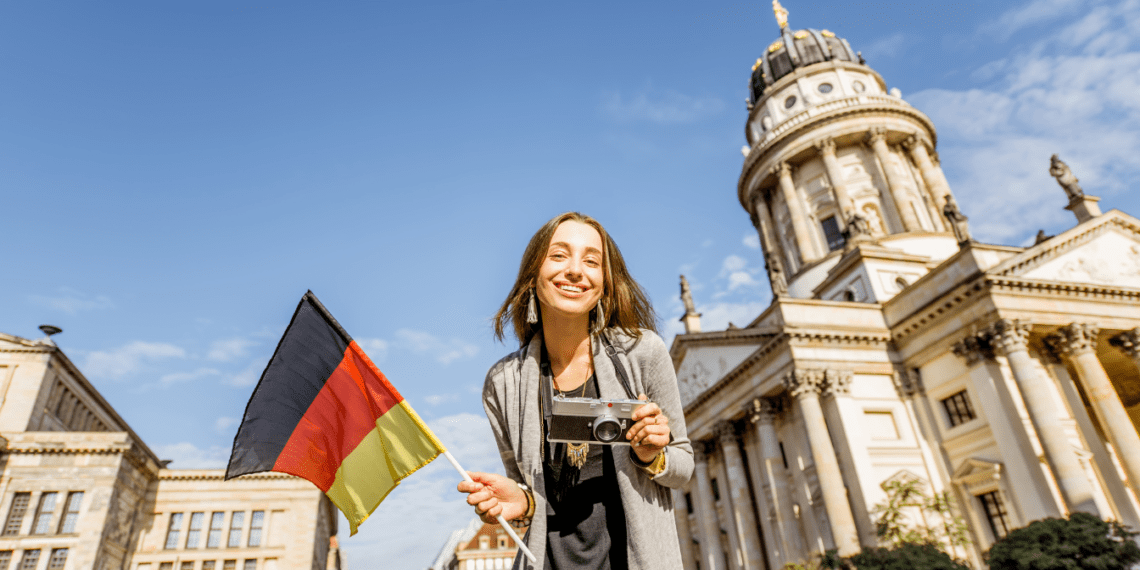Ah, Germany – where fairytale castles meet iconic cities and rich culture. As you journey to this wonderland, you may wonder, What will Germany offer me? How best to enjoy it? Be it vibrant city life, peaceful nature spots, or history lessons, we’ve got you covered. This guide will shape your perfect German adventure, just for you.
Key Takeaways
- Germany offers a diverse range of destinations and experiences to suit every traveler’s preferences.
- With efficient transportation options and English-speaking locals, navigating Germany is straightforward.
- Crafting a personalized itinerary is key to maximizing your time and discovering the hidden gems of Germany.
- Researching and planning ahead can help you save money and make the most of your Germany vacation.
- Immersing yourself in the local culture and cuisine is an essential part of the German travel experience.
Meet Your Germany Travel Guides
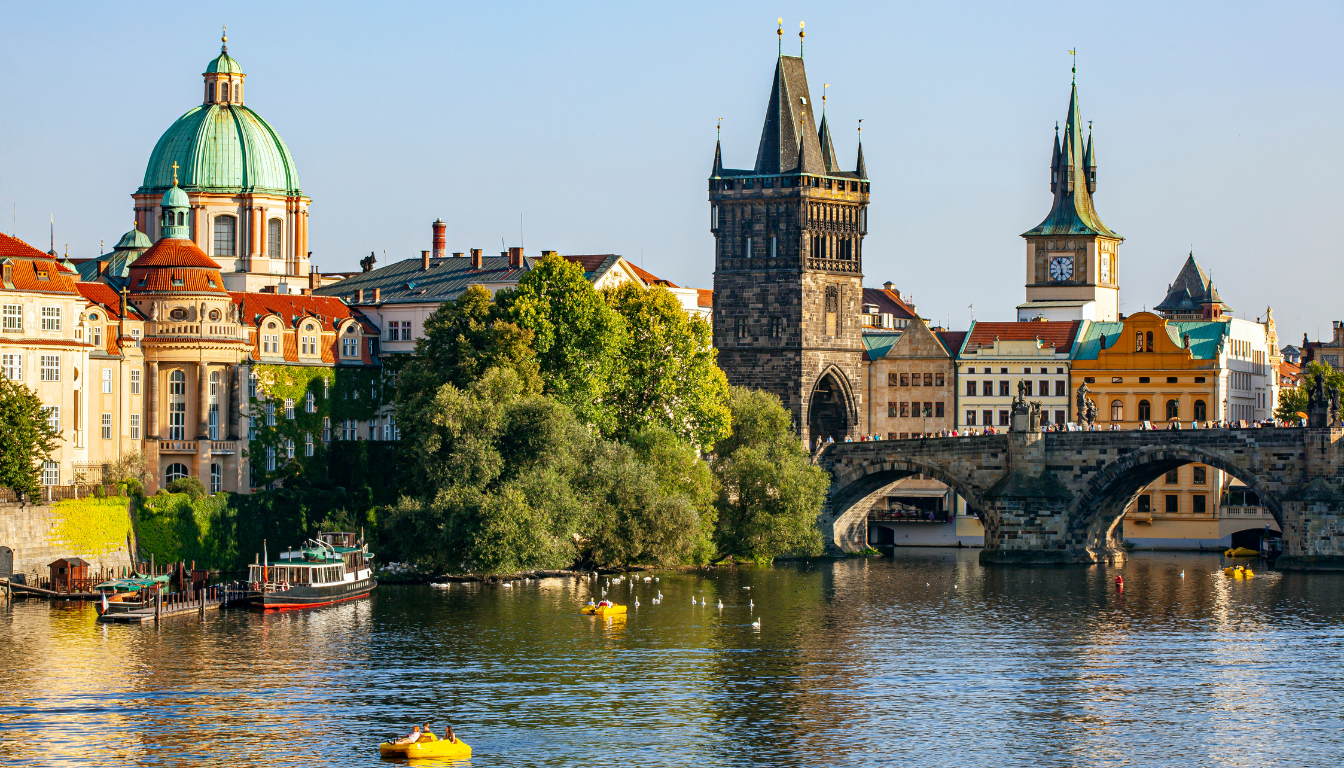
Hi, we’re Cate and Aaron. We love making trips to Germany amazing. Aaron visited Germany many times. He’s our main driver when we need a rental car. I lived there over 4 years. Plus, I’ve spent almost 30 years traveling between the US and Germany. Teaching German was my job for years. I have a PhD in German Applied Linguistics. So, I know Germany very well from many views. We’re thrilled to help you plan your Deutschland trip!
We’re experienced Germany travel guides and vacation planners. We know all the great parts of this country. From Bavaria’s magical castles to Berlin’s modern vibe, we’ve seen it all. Our mission is to give you great tips and our love for Germany. We want you to have an amazing time here.
If you love history or food, or if you’re an outdoor person, we have you covered. Get ready to find out what makes Germany special. You’ll make memories you’ll always treasure.
“Germany is a country that offers a diverse range of attractions beyond the traditional stereotypes, appealing to various types of travelers.”
Germany has exciting cities and lovely small towns. It’s a place for all kinds of people. We’ll show you the best of Germany. Let us guide you. Discover the best kept secrets and the must-see places. Your Germany vacation will be magical with our tips.
Overview of Regions
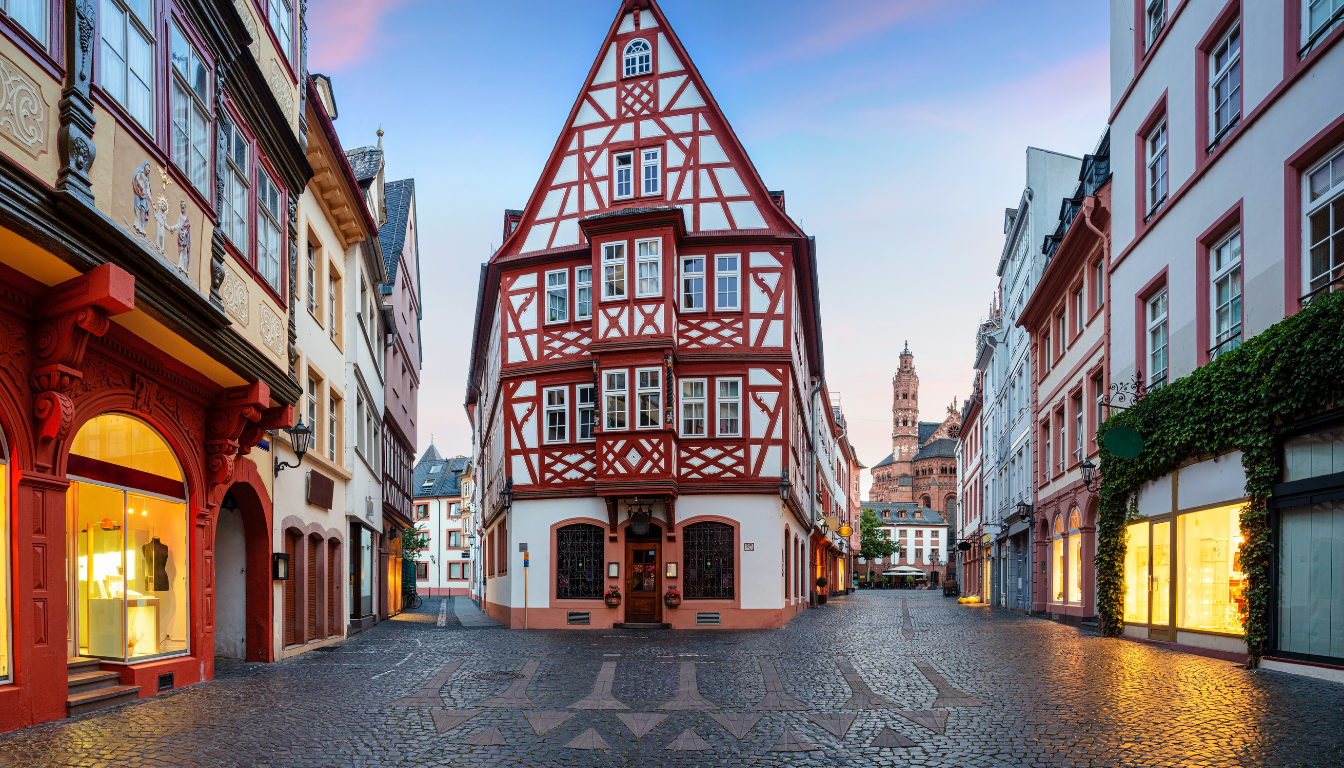
Germany is a diverse and captivating country. It offers a wide range of experiences in its regions. The vibrant cities and serene landscapes in each area have unique charm. This attracts both tourists and travelers. Let’s look at highlights from some popular regions:
Northern Germany
Northern Germany has the bustling port city of Hamburg at its core. There are also charming cities like Lübeck and Bremen. But, the region’s true beauty is in its nature. It has beaches, a national park, and islands such as Sylt. Northern Germany is perfect for cycling because of its flat lands.
Eastern Germany
Eastern Germany is dynamic, showing rich history and culture. It’s led by the vibrant Berlin. Other cities like Dresden and Leipzig are also key. The Harz mountains and Swiss Saxony park are amazing for outdoor activities.
Central Germany
Central Germany is a mix of bustling cities and natural wonders. It includes cities like Cologne and Frankfurt and areas by the Rhine river. The Eifel national park adds to its charm.
Black Forest/Baden-Württemberg
The Black Forest/Baden-Württemberg region stands out. It has vibrant cities and natural beauty. Places like Stuttgart and Lake Constance offer unique experiences.
Bavaria/Alps
Bavaria/Alps is known for its iconic beauty. Munich, Neuschwanstein Castle, and Zugspitze are highlights. Combining this with a visit to Austria or Switzerland makes it special.
Germany has diverse regions for a dream vacation. Whether you prefer cities, landscapes, or culture, it’s a place that stays with you.
Where to Go in Germany: Itineraries and Planning
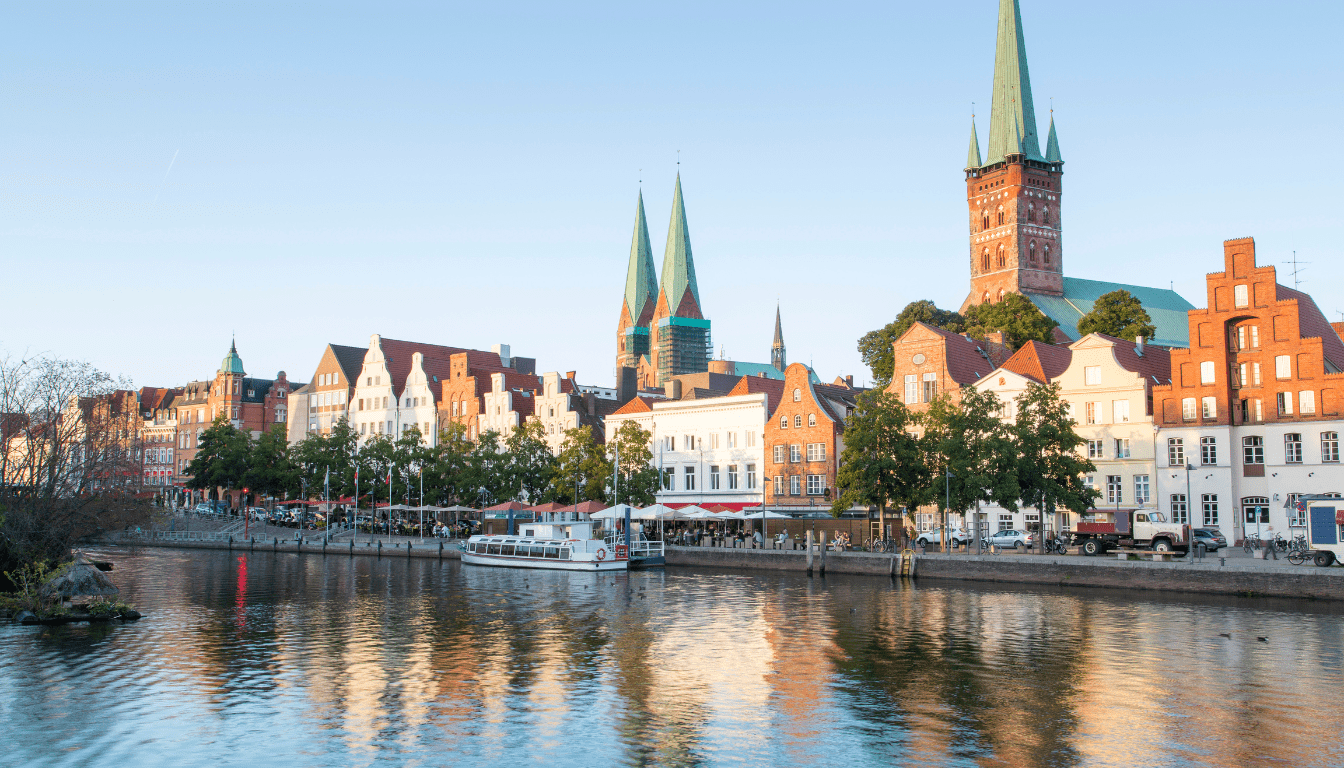
Germany is an exciting country to visit with a lot to see. Even if you’re here for only a few days or a couple weeks, there are germany travel itineraries and tips to make your germany vacation awesome.
Itineraries for Various Trip Durations
If you have just a few days in Germany, pick one city to explore. Add in a day trip for more fun. For example, enjoy Hamburg and visit Lübeck in a day. Or, try Munich with a side trip to Neuschwanstein Castle, the fairytale icon.
Spending one week in Germany lets you see two cities plus a few day trips. Start with Berlin, then move to Cologne or the Rhine Valley. Don’t miss Rothenburg ob der Tauber and the Bavarian Alps on the way.
With two weeks in Germany, you can explore the different areas deeply. Imagine visiting Berlin, Dresden, Munich, Black Forest, Rothenburg, and the Rhine and Mosel Valleys. Now that’s an adventure.
| Trip Duration | Suggested Itinerary |
|---|---|
| 3-5 days | Munich, Bavarian Alps |
| 1 week | Rhine Valley, Rothenburg |
| 10-14 days | Berlin, Nürnberg, Mosel Valley |
| 2-3 weeks | Dresden, Baden-Baden, Black Forest, Trier |
The germany train travel is very convenient for tourists. For instance, a train from Berlin to Hamburg takes only 1 hour 45 minutes. From Berlin to Munich, it’s a bit longer at 4-4.5 hours. With good planning, you will see a lot of the country.
Top Cities and Attractions
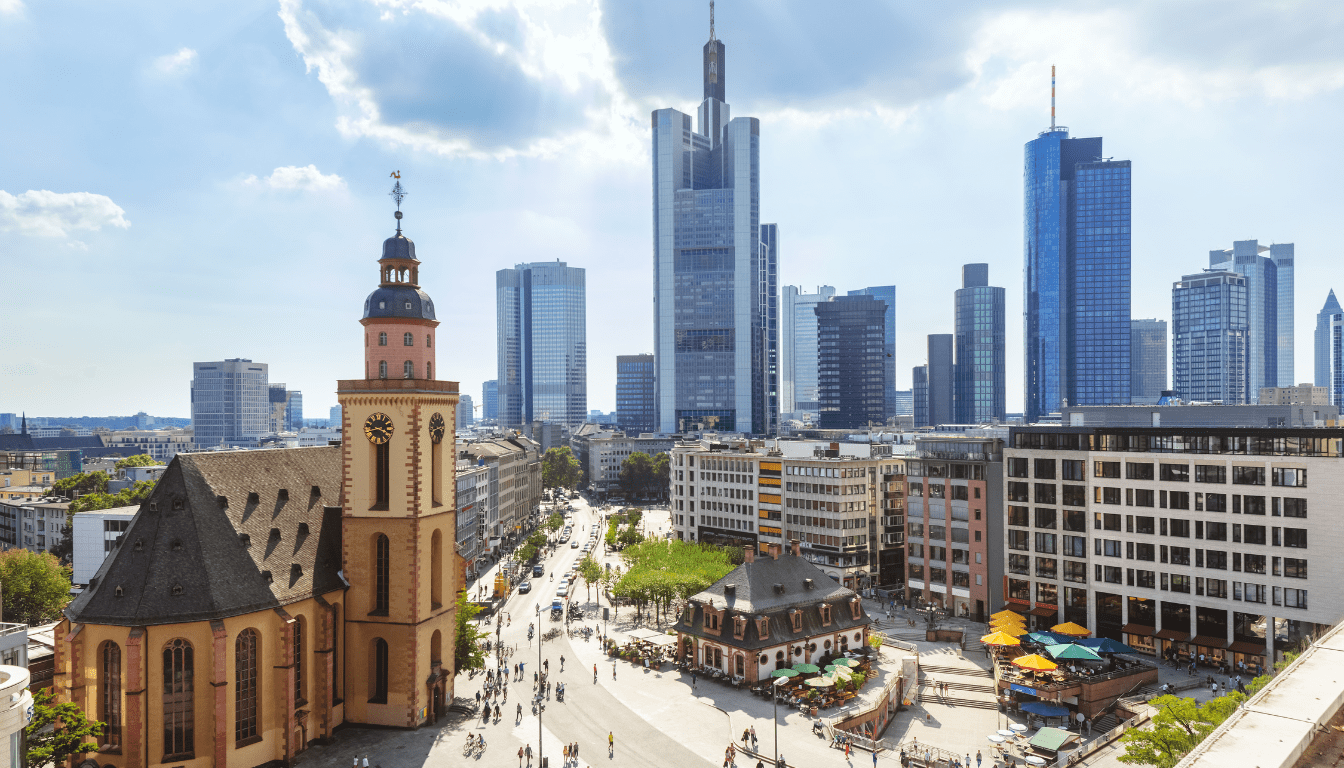
Germany is a diverse and captivating place. It offers many vibrant cities and exciting spots for visitors. When planning your trip to Deutschland, check out the top destinations.
Berlin is the capital and full of culture, fashion, art, and nightlife. It attracts more than 10 million visitors yearly, making it the top spot in Germany. Munich, famous for Oktoberfest, welcomes over 6 million guests yearly. Frankfurt is Germany’s most international city, an important European business hub, and a common transit point for travelers.
Cologne features a rich past in its architecture, with Roman towers and Gothic cathedrals. Hamburg is known as the “Venice of the North” because of its canals and bridges. Leipzig is on the rise as an art city, with a lively night scene and affordable living costs.
Germany is also filled with charming small towns and historical sites. Dresden was heavily bombed in World War II but has been restored to show its baroque beauty. Nuremberg stands out for its medieval walls and Gothic churches. Düsseldorf is famous for fashion, with a busy art scene and nightlife.
Consider buying travel passes like the KölnCard in Cologne or the Berlin Welcome Card for discounts. These cards give cheaper access to cultural places and transport. They help make your Germany trip more fun and affordable.
Germany’s major cities and small towns both have a unique appeal. From big city vibes to small town charm, Germany has it all. Start planning your adventure in this amazing country today!
Exploring Germany’s Diverse Regions
Germany has something for everyone, from the Black Forest in the south to the historic sites up north. The Oberes Mittelrheintal (Upper Middle Rhine Valley), a UNESCO World Heritage Site, is known for its beautiful scenery and castles. The Black Forest High Road (Schwarzwaldhochstrasse) is a scenic drive that captures the beauty of Germany’s nature.
- Berlin: Vibrant culture, fashion, art, and nightlife
- Munich: Home to the famous Oktoberfest celebrations
- Frankfurt: Germany’s most international city and economic hub
- Cologne: Stunning architecture, including Roman towers and Gothic cathedrals
- Hamburg: The “Venice of the North” with its numerous bridges and canals
- Leipzig: Emerging as an exciting art capital with a lively nightlife
- Dresden: Rebuilt to its original baroque glory after WWII devastation
- Nuremberg: Renowned for its medieval fortifications and Gothic churches
- Düsseldorf: Acclaimed as Germany’s fashion capital with a vibrant art scene
- Bremen: A historic city recognized for its hospitality and UNESCO-listed old town
Charming Small Towns and Villages
Germany’s places are filled with charming small towns and villages. Each shows a piece of the country’s history and culture. Places like Rothenburg ob der Tauber and Bamberg let you see the real beauty of Germany.
Cochem is one of Germany’s most enchanting small towns. It has a beautiful castle over the Moselle River. The town’s ancient area and classic buildings make it a magical place.
Monschau is another special spot. It’s known for its quiet places and fun Christmas market. This western German town is a hidden gem.
Rudesheim am Rhein is famous for its wine, like Riesling and Pinot Noir. The town’s winemaking tradition is long. Michelstadt, in the Odenwald, has a famous Gothic town hall and is known for its Christmas market.
Miltenberg has a stunning Renaissance fountain on its square. You’ll also find charming houses around it. Rothenburg ob der Tauber, in the south, is known for its old city walls and beautiful buildings.
Visiting small towns in Germany lets you dive into the culture. Places like Bamberg and Wernigerode are like stepping into a fairy tale. This country’s quaint towns are both captivating and inspiring.
“Germany is a living museum of architecture, from the Romanesque cathedrals to the fairy-tale castles and the half-timbered villages.”
There are many places in Germany that are full of history and beauty. Whether you love history, porcelain, or nature, these small towns and villages have something special. Planning a trip here means finding hidden gems that show what Germany is really about.
Fairytale Castles and Palaces
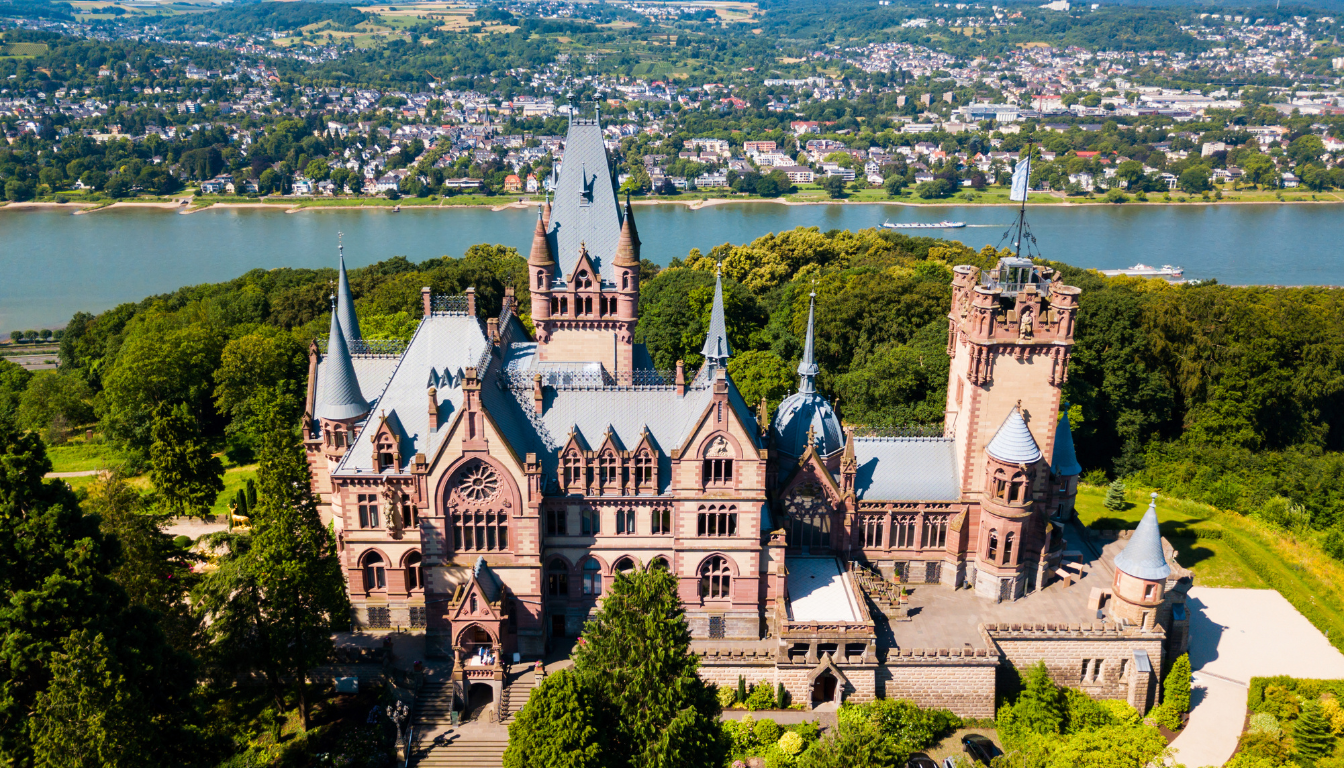
Germany is famous for its fairytale castles that have charmed visitors for ages. You’ll find everything from the well-known Neuschwanstein Castle to smaller, secret gems. These castles show off the country’s deep history and rich culture. Don’t miss these stunning castles and palaces on your trip to Germany.
Neuschwanstein Castle: The “Disney Castle”
Standing tall in the Bavarian Alps, Neuschwanstein Castle is the top fairytale spot. Built in the 19th century by King Ludwig II, it’s linked with Germany’s romantic side. It’s even said to have inspired Disneyland’s Sleeping Beauty Castle. Neuschwanstein’s towers and amazing views make it a place you can’t miss in Germany.
Castles Near Frankfurt and Cologne
Germany goes beyond Neuschwanstein with stunning castles close to Frankfurt and Cologne. Near the Rhineland, you’ll come across Drachenburg Castle, a 19th century villa, and the famous Cologne Cathedral. These historic sites mix rich history with stunning architecture.
Other Fairytale Castles to Explore
Keep exploring and you’ll find more castles taking you back in time. Visit Burg Eltz, still owned by its original family. Or see Rheinfels Castle and Herrenchiemsee Palace, styled like the Palace of Versailles. There are many more fairytale-like places waiting to be discovered in Germany.
Germany’s castles and palaces, from the dreamy Neuschwanstein to the historic Burg Eltz, offer a truly special experience. They let you dive deep into the country’s history while sparking your own dreams. So, as you plan your visit, get ready for a trip full of stories and wonders.
“Fairytales do not tell children that dragons exist. Children already know that dragons exist. Fairytales tell children that dragons can be killed.”
– G.K. Chesterton
Islands, Lakes and Coastal Areas
Germany is filled with natural beauty, including islands, lakes, and coastal spots. The North Sea has clean sandy beaches while the Baltic Sea has calm and clear waters. These places show the different sides of Germany’s environment.
Rügen is Germany’s biggest island and sits in the Baltic Sea. It has been a favorite spot for visitors for many years. People like Otto von Bismarck, Sigmund Freud, and Albert Einstein came here. Rügen’s Jasmund National Park is a UNESCO site that features the beautiful white cliffs of Königsstuhl.
Hiddensee is a special island without cars, next to Rügen. It’s the biggest in a national park there. This island is great for people who love nature because of its protected areas and big sandy beaches.
In southern Germany, there is Lake Constance (Bodensee), Europe’s third-largest lake. It has several islands, including Lindau and Mainau. Mainau is famous for its amazing gardens, attracting more than a million people every year.
Sylt, known as the “Queen of the North Sea,” has 40 kilometers of white sand beaches and red cliffs. The island’s special local language, combining Danish, Dutch, and English, makes it even more special.
Föhr is the second-largest island in the North Sea. It’s part of the Wadden Sea, a UNESCO site known for its many seals, porpoises, and migratory birds.
Usedom is shared by Germany and Poland and is one of the sunniest spots in Germany. It has 45 kilometers of beautiful coast, resorts, and spas.
From Heligoland’s remote cliffs to Berlin’s cultural Museum Island, Germany has many amazing places to visit. Whether you love the beach, outdoor activities, or culture, you’ll find unforgettable experiences here.
National Parks and Outdoor Adventures
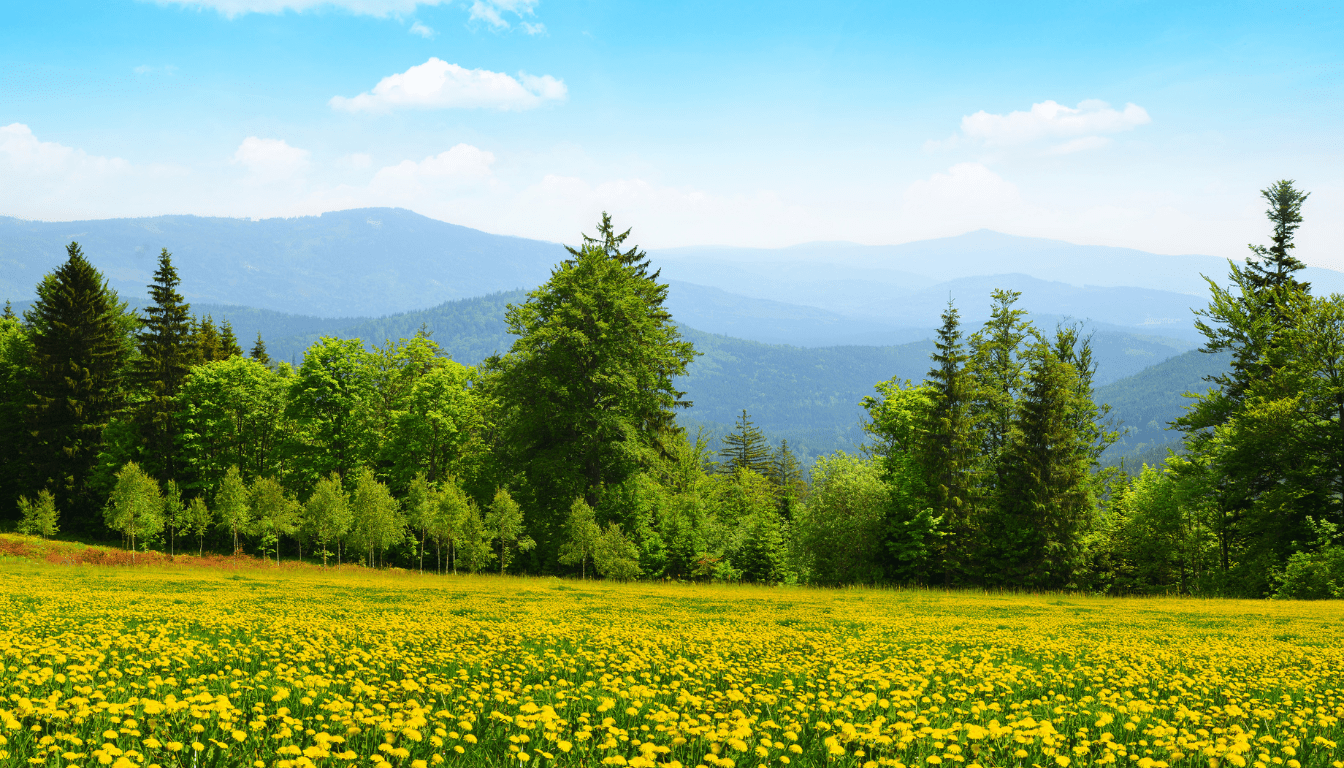
Germany is a paradise for anyone who loves the outdoors. It has a mix of national parks and chances for exciting adventures. The serene Wadden Sea National Parks and the grand Bavarian Alps are just some spots you can explore.
The Bavarian Forest National Park is a standout in the country’s park system. It spans over 60,000 acres, making it perfect for nature fans. This vibrant park shows its best in spring with wildflowers. Summer brings hikers and bikers to the 217-mile trail network.
The park turns into a colorful wonderland in the fall. Winter brings snow and turns the Bavarian Forest into a magical place for activities like snowshoeing.
Germany’s natural beauty goes beyond the Bavarian Forest. Places like the Wadden Sea National Parks along the coast of the North Sea have unique ecosystems. The Jasmund National Park on Rügen has impressive chalk cliffs. And Harz National Park in central Germany is perfect in winter for activities like skiing.
No matter what outdoor experience you’re after, Germany has something for you. Its varied lands, deep culture, and many national parks make it a top spot for nature and adventure lovers. Whether you like quiet forest walks or big thrills like skiing, you can find it here.
| National Park | Highlights | Best Season |
|---|---|---|
| Bavarian Forest National Park | Extensive hiking and biking trails, wildlife viewing | Spring, Summer, Autumn |
| Jasmund National Park | Stunning chalk cliffs, Baltic Sea coastline | Summer |
| Harz National Park | Winter sports, snow-covered landscapes | Winter |
| Wadden Sea National Parks | Unique coastal ecosystem, UNESCO-recognized | Year-round |
“Germany offers as much in the way of great outdoor adventures as it does in big city thrills.”
how to plan a trip to germany
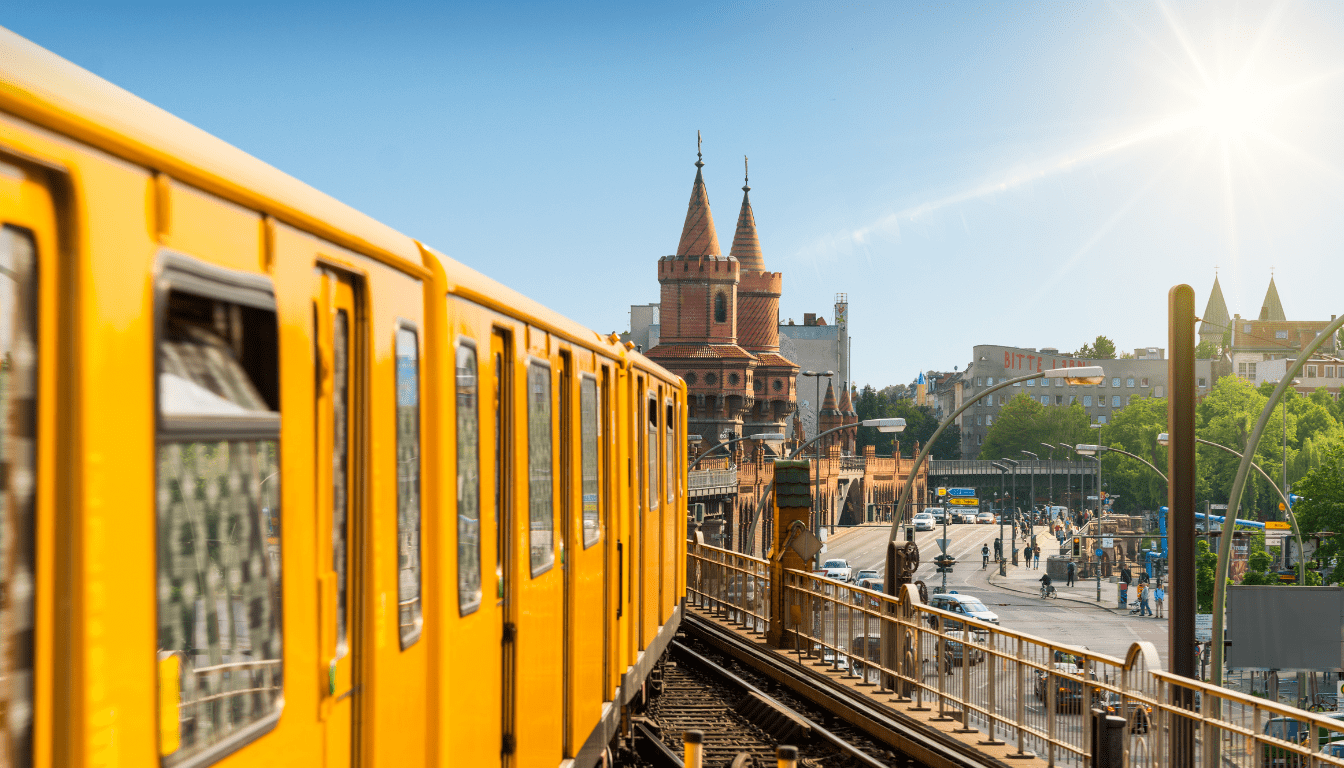
Planning a trip to Germany can be thrilling if done right. It’s wise to have a solid plan. Think about staying several nights in one city. This will make day trips easier and less stressful.
Trains are a top choice for traveling in Germany. It’s smart to book tickets and places to stay early. This ensures you get the best options and prices. Use resources like blogs, guidebooks, and TripAdvisor for tips.
Tips for Planning Your Germany Itinerary
- Utilize a “home base” strategy to minimize the hassle of constantly relocating
- Book train tickets, accommodations, and other reservations well in advance
- Consult travel blogs, guidebooks, and TripAdvisor to research and plan your itinerary
Booking Transportation and Accommodations
The train system in Germany is fast and budget-friendly. Try to book your train travel early for great deals. For places to stay, mix it up with hotels, vacation rentals, and hostels.
| Transportation | Accommodations |
|---|---|
|
|
By carefully planning your Germany travel, you’ll be well on your way to an unforgettable Germany vacation. Stay flexible and keep your eyes open for new, fun experiences.
Passports and Visas
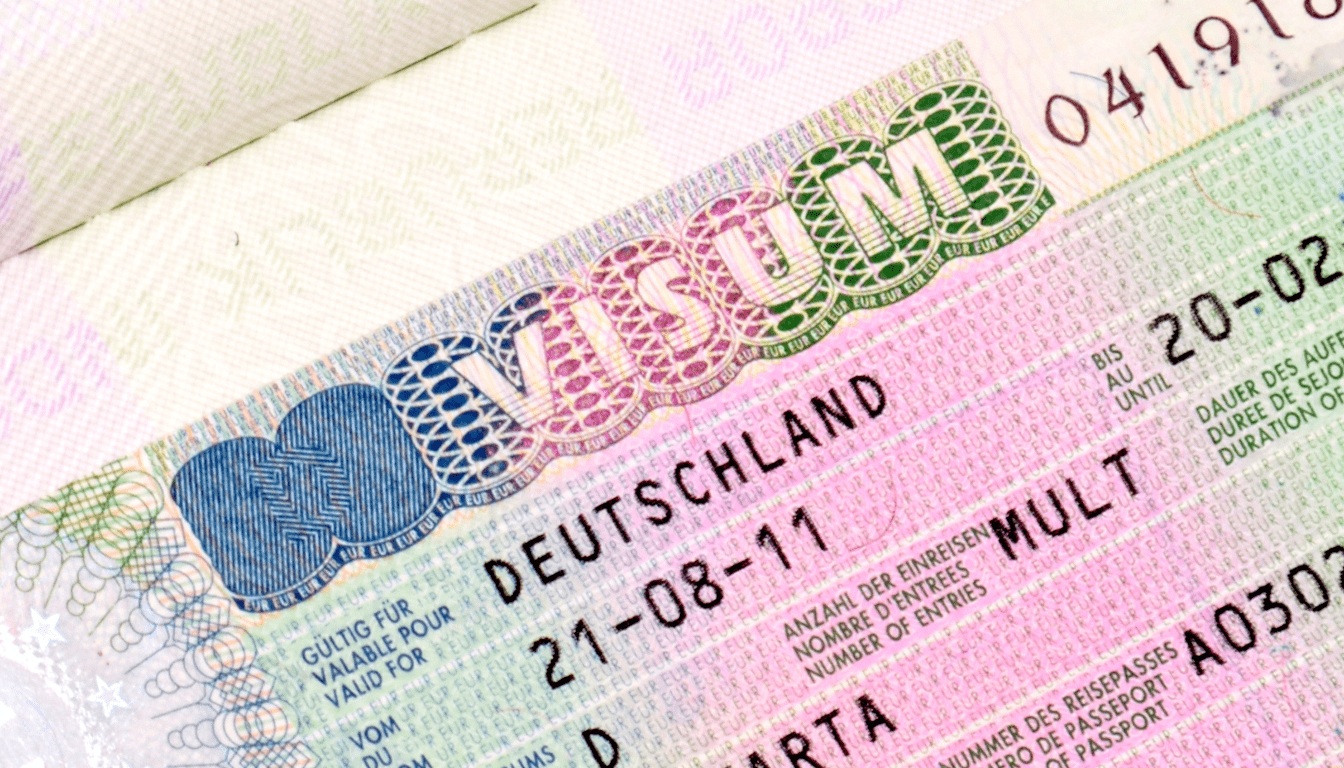
Planning a trip to Germany means making sure you have the right travel documents. If you’re from the US, Canada, Australia, New Zealand, or many other places, you won’t need a Germany visa. Just make sure your passport is valid for at least 3 months after you plan to leave. Six months of validity is best when entering Germany.
Germany is in the Schengen zone. This means any days you spend in other Schengen countries like Austria, Belgium, France, Greece, and more will also count. Keep track of your days to stay within the 90-day visa-free limit.
- 27 countries are part of the Schengen area, including Austria, Belgium, Czech Republic, Croatia, and more.
- Schengen visas come as Single-entry, Double-entry, and Multiple-entry visas.
- U.S. citizens do not need an EU visa for the Schengen area. But they should carry documents like a passport, trip purpose evidence, financial means proof, and health insurance proof.
- Make sure your passport is good for at least 3 months after your trip ends.
- If you have a “Refugee Travel Document” from the US DHS, you don’t need a visa for Germany for up to 90 days for business, travel, or visiting friends.
To have a smooth trip to Germany, know about the germany travel documents, germany visa requirements, and germany entry requirements. Think ahead and get your paperwork in order before leaving.
“Traveling to Germany is an incredible experience, but it’s important to make sure you have the right paperwork in order before you go. With a valid passport and an understanding of the visa requirements, you’ll be on your way to an unforgettable journey.”
Best Time to Visit Germany
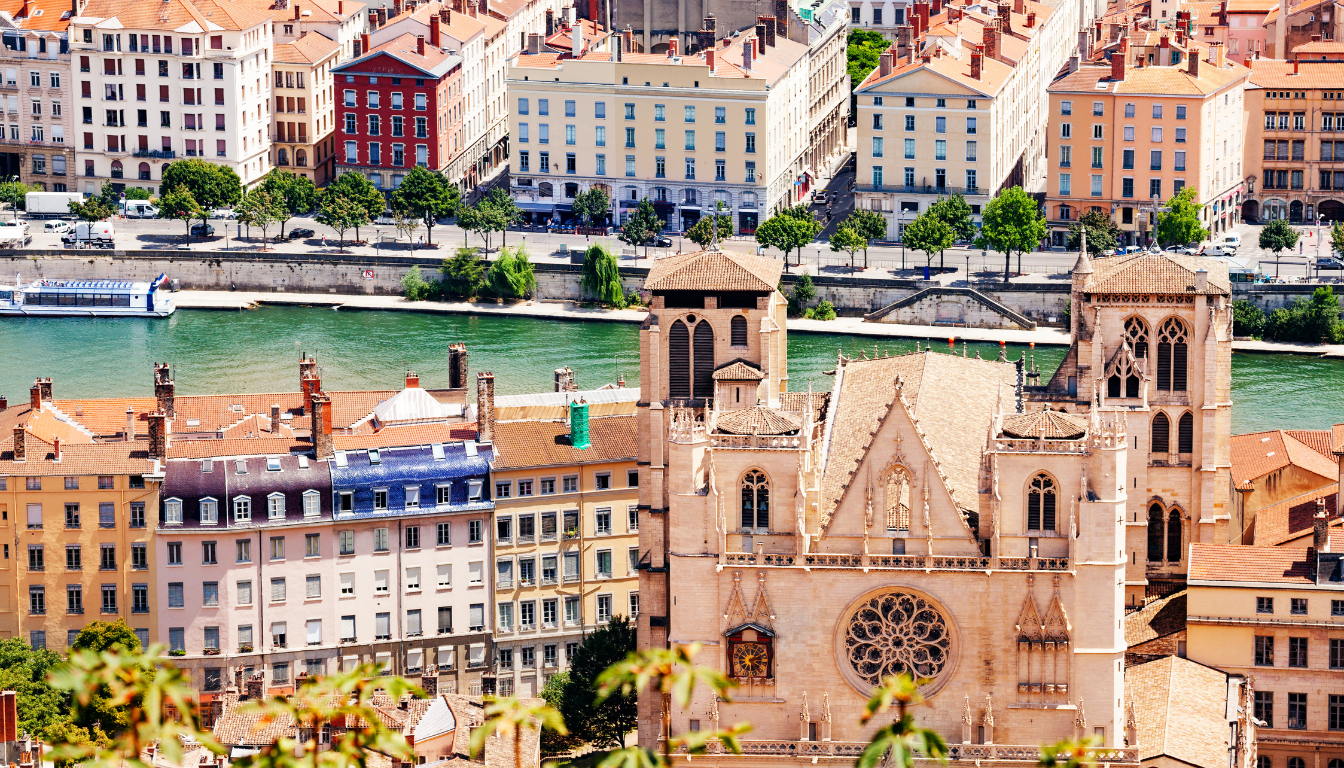
The best time to visit Germany depends on what you like and when you wish to travel. It’s great any time of the year. Each season has special things to see and do.
If you love warm days and big celebrations, come between May to September. The famous Oktoberfest in Munich happens in September and October.
Spring and fall are perfect for saving money and skipping the crowds. It’s a great time to visit small German towns peacefully.
Winter turns Germany into a fairytale. Christmas markets open in late November. They are full of festive joy and German traditions.
- May to September: Warmer weather and vibrant festivals, including Oktoberfest in Munich.
- March to May and October to November: Optimal for budget travelers with lower accommodation rates and reduced crowds.
- December: Ideal for visiting the enchanting Christmas markets across Germany.
- January to March: Prime time for skiing in the Bavarian Alps and other mountain regions.
When you should visit comes down to you and what you want from your trip. Germany is ready to welcome you with its unique charm and scenic beauty in every season.
What to Pack for Germany
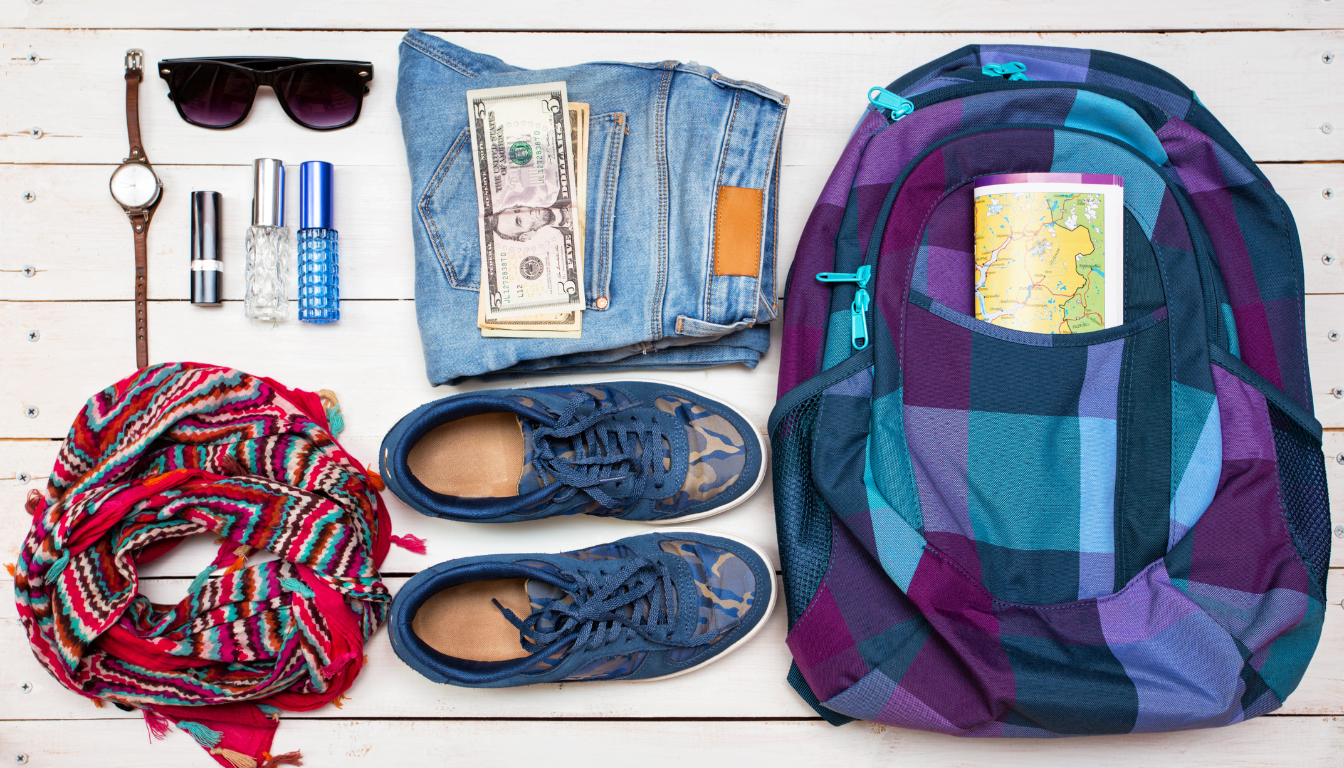
Planning a trip to Germany means choosing the right clothes and gear. This will help you be comfortable and enjoy your experience. Focus on items you can layer for the country’s varied weather. Prepare well. This ensures you have everything you need for your adventure in Germany.
Essential Clothing and Accessories
- Comfortable walking shoes: For Germany’s cobblestone streets and extensive public transport, you need shoes that support you.
- Layering pieces: Include short-sleeve tops, long-sleeve shirts, and sweaters. These help you deal with changing temperatures, especially during the shoulder seasons.
- Durable jeans or pants: Choose a few pairs that can fit many occasions, like wide-leg and straight-leg styles.
- Lightweight rain jacket: Since Germany’s weather can change quickly, a good rain jacket is essential.
- Sunhat or cap: Wear something to shield yourself from the sun, whether sightseeing or shopping in markets.
Travel Essentials
- Electrical adapter: You need this to charge your devices due to Germany’s different outlet system.
- Portable charger: A necessary item to keep your electronics charged all day.
- Packing cubes: These help you organize your stuff, saving space in your luggage.
- Reusable water bottle: As tap water is safe, a refillable bottle is perfect for staying hydrated.
- Lightweight backpack or crossbody bag: Ideal for keeping your essentials close while exploring.
| Item | Quantity | Notes |
|---|---|---|
| Tank tops | 3 | For layering or wearing on their own |
| T-shirts | 4 | 1 short-sleeve, 2 long-sleeve |
| Jeans | 2 pairs | Wide leg and straight leg |
| Additional pants | 2 pairs | 1 pair of joggers, 1 pair of leggings |
| Footwear | 3 pairs | Loafers, sneakers, ankle boots |
| Bags | 3 | Fanny pack, crossbody bag, reusable shopping bags |
| Outerwear | 1 | Lightweight rain jacket |
| Headwear | 1 | Hat |
When preparing for your Germany trip, remember versatility and comfort. Choose clothes you can easily layer. This gets you ready for changing weather and various activities during your Germany adventure. For in-depth packing tips and inspiration, visit this detailed Germany travel packing list.
“The key to packing for Germany is versatility. Bring clothes that can be easily layered to adapt to the changing weather conditions.”
Traditional German Food and Drink
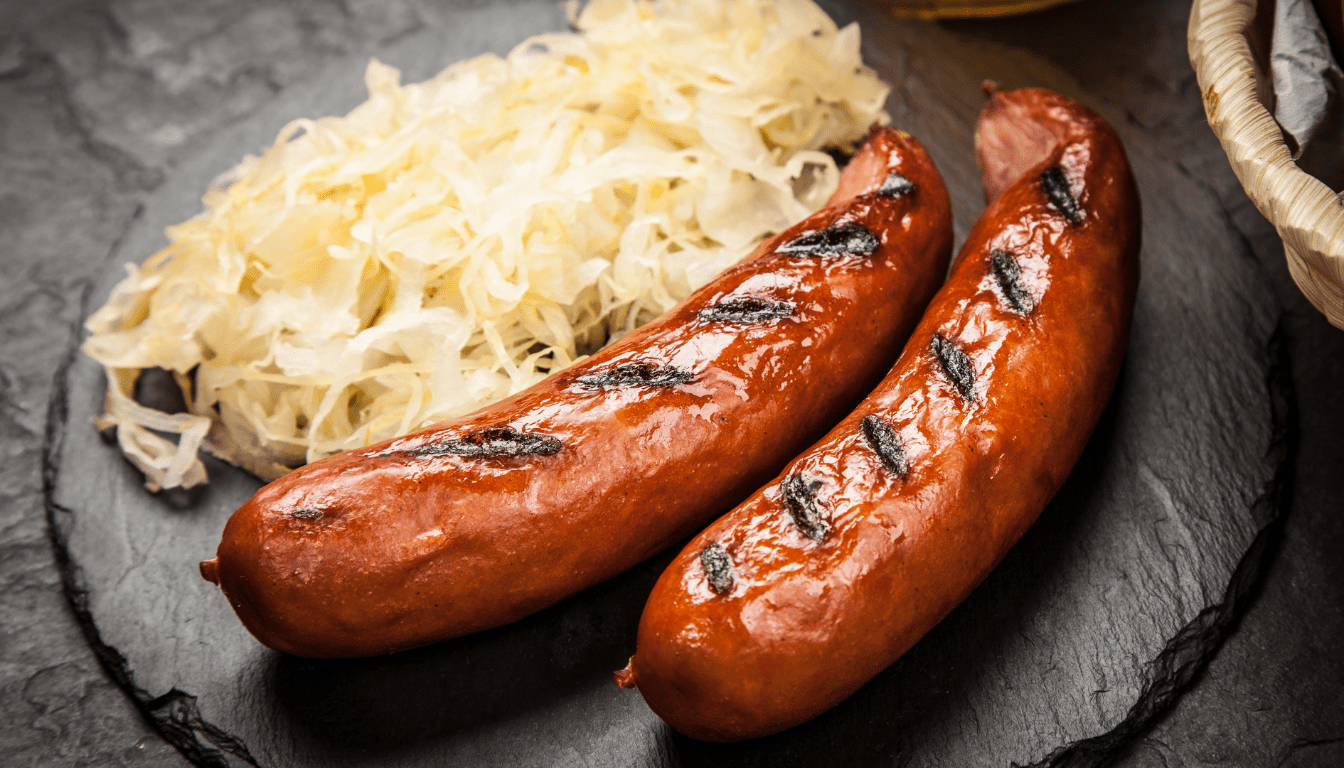
Visiting Germany means diving into its amazing food scene. You’ll discover dishes that warm your heart and drinks that are known worldwide. This experience is a direct path to understanding German culture.
German cuisine reflects the country’s diverse regions. The south offers sausages, pretzels, and schnitzel, while the north shines with seafood. Iconic beer and wine complete the culinary adventure.
Wondering what dishes to try? Here’s a list of the top picks: Bratwurst, Currywurst, Döner Kebab, Schnitzel, Sauerkraut, Labskaus, and Himmel und Erde.
Sampling German cuisine is a must during your visit. It offers insights into the country’s traditions. Trying local foods and drinks enriches your travel experience. It’s a fun way to connect with the culture.
Don’t miss the chance to explore Germany’s food and beverage scene. Trying new things is rewarding. It broadens your culinary horizon and leaves you with fond memories.
“Eat breakfast like an emperor, lunch like a king, and dinner like a beggar.” – Traditional German saying
| German Bread Varieties | Description |
|---|---|
| Brötchen | Small bread rolls, often enjoyed for breakfast with meat, cheese, or spreads. |
| Kürbiskernbrot | Bread made with pumpkin seeds. |
| Sonnenblumenkernbrot | Bread made with sunflower seeds. |
| Pumpernickel | A dense, dark rye bread. |
| Vollkornbrot | A whole wheat bread with at least 90% whole wheat flour. |
Whether it’s a Bratwurst, a pretzel, or a beer, Germany’s traditional foods and drinks will charm you. Enjoy the flavors and make memories in this unique country.
Conclusion
Germany is a truly remarkable destination. It offers a mix of experiences for different interests. You can enjoy lively cities like Berlin and Munich, or explore cozy small towns. The country’s history, beautiful nature, and tasty food make it a top pick for many.
Are you fascinated by Germany’s castles or its rich cultural scene? Maybe you just want to unwind in its stunning landscapes. This guide helps you discover the best places to visit. It also gives tips to plan a trip that’s perfect for you, whatever your budget.
So, what’s stopping you? Start planning your trip to Germany now. With a bit of prep and this guide, you’re guaranteed to have a great time. Enjoy Germany’s heritage, its lively spirit, and its welcoming people. Let it be a trip that stays with you forever.
FAQ
What are the best regions to visit in Germany?
Germany is full of unique areas to see. Northern Germany boasts Hamburg, Lübeck, and Bremen. Bavaria shines with Munich, the Alps, and storybook castles. Don’t miss the beauty of the Rhein River area.
How much time do I need to see the highlights of Germany?
It all depends on what you’re into. Here’s a general idea:
– Spend a few days on one city and a day trip.
– A week lets you explore 2 cities and take 2 trips.
– In 2 weeks, dive into Berlin, Hamburg, the Rhein, Black Forest, and Munich.
What are some of the top cities and attractions in Germany?
You won’t want to miss key cities and sights:
– Metropolises like Berlin, Hamburg, Munich, and more.
– Quaint gems such as Lübeck, Regensburg, Heidelberg.
– Explore Neuschwanstein, Hohenschwangau castles.
– Visit scenic spots like Sylt, Lake Constance.
– Adventure in the national parks.
What is the best way to get around Germany?
Jump on Germany’s fantastic train system. Stay a few nights in a city and explore from there. This method is better than always relocating. Remember to book trains and places to stay ahead of time.
Do I need a visa to visit Germany?
If you’re from the US, Canada, Australia, or many others, no visa is needed for Germany. Your passport must be valid for 3-6 months after you leave. Germany’s a Schengen country, so your 90 days includes time spent elsewhere in the zone.
When is the best time of year to visit Germany?
The perfect time to visit depends on what you like. Summers are busy and warm, perfect for festivals. Spring and fall mean fewer crowds and mild weather. Winter brings cold but charming markets. Pick the season that matches your wish list.
What should I pack for my trip to Germany?
Pack smart for Germany with layers and comfy shoes. Bring an adapter, charger, and a raincoat. Packing cubes will make fitting everything easier.
What are some must-try German foods and drinks?
German cuisine is a treat. Enjoy sausages, pretzels, schnitzel, spaetzle, and their famous beers and wines.





















